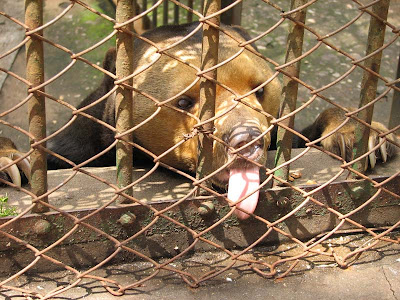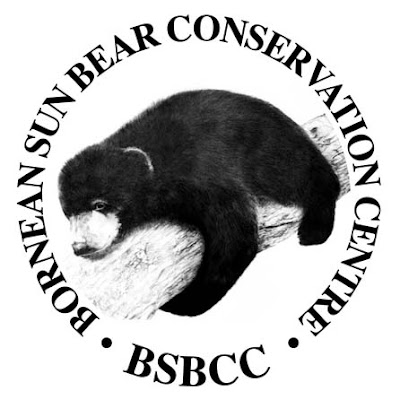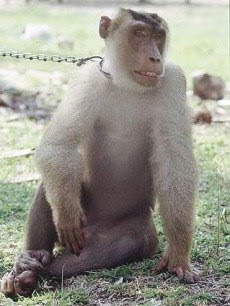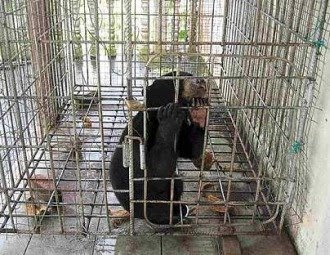By JACK WONG
KUCHING: Two brown Malayan sun bears caught on a remote camera in a planted forest zone in Bintulu Division are believed to be the first such discovery in Malaysia and Borneo.
Sun bears found in Malaysia and Borneo were black in colour, said Grand Perfect Sdn Bhd conservation department’s project officer Belden Giman.
“This first recording of brown sun bears in Malaysia and Borneo is very interesting. The two sun bears are not yet adults,” he told The Star yesterday.
Grand Perfect is the contractor for Sarawak Planted Forest Sdn Bhd, which is in charge of the 500,000ha Bintulu planted forest Zone project.
 Rare bear: One of two brown Malayan sun bears caught on film as the rare creature trips a remotely operated camera in a planted forest in Bintulu. — Picture courtesy of Grand Perfect
Rare bear: One of two brown Malayan sun bears caught on film as the rare creature trips a remotely operated camera in a planted forest in Bintulu. — Picture courtesy of Grand Perfect
Beldem and colleagues, Tony Chaong and Nyegang Megom, gave a joint presentation on “Remote camera survey: An essential tool for wildlife monitoring in the planted forest zone” at an international conference in Kuching Hilton that began on Wednesday.
Some 200 participants are attending the Association for Tropical Biology and Conservation Asia-Pacific chapter’s three-day conference on the theme “Towards sustainable land use in Tropical Asia.”
Belden said the dramatic photos of the brown sun bears were caught on the remote camera in the plantation area last July. The protected sun bears are the smallest in the bear family.
The remote camera survey (2005 – 2007) also revealed 25 other species of large and medium-sized mammals.
He said since early 2005, a series of camera-trapping inventories had been done in and around the acacia mangium plantation to document the diversity, occurrence and richness of terrestrial fauna.
“Some 20 study areas, including two main conservation areas and the wildlife corridor, were selected.
“Each block (1km sq) will be sampled, at least with two cameras for 30 days in about three years,” he added.
Belden said a five-year sampling period until Aug 2012 was now underway.
The long-term monitoring model was adopted in collaboration with US-based Smithsonian Institution – Conservation Centre.
He said the data and subsequent information from the study would contribute to the understanding of the dynamic population of mammals in the planted forest zone and in Sarawak and Borneo.
Belden said the project also involved the local community in its training and awareness programmes.
=================================================
The following is my comment on this “rare brown sun bear”:
I do not think this is a rare “brown” sun bear. In stead, it is a “normal” black sun bear that we are familiar with. The “brown” color of the pelage may resulted either from:
1) The bear was rolling on red soil prior to the photo was taken. Sun bear sometime rolls on the ground to have a “dirt bath”. When the weather and ground is dry, this red dirt tends to adhere to the pelage for some time. These are a series of photos of Bear 102 or "Infapro" doing his "dirt bath" rollong on the ground. (Photo: Siew Te Wong)


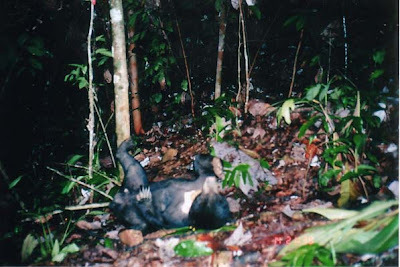

Sun bear often dig to find underground termite and stingless bee nests. When they dig, they also tend to make a mess out of themselves. This is Bear 112 or Lai Xiung. (Photo: Siew Te Wong)
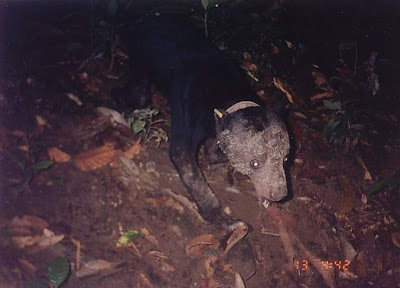
2) Reflection from the flesh that distorted the original color of the pelage. This happen quite commonly for camera trapping, when the flesh of the camera is too strong or too weak, especially when using the filmed cameras.
However, there are “brown” or yellow color sun bears. Here are some examples:
1) Like human, sun bear grow white, pale, or most of the tine yellow hairs when they get old. This is “Garang”- the sun bear in Singapore Zoo. She is 31 year old this year, probably the oldest sun bear ever recorded in captivity. (Photo: Siew Te Wong)
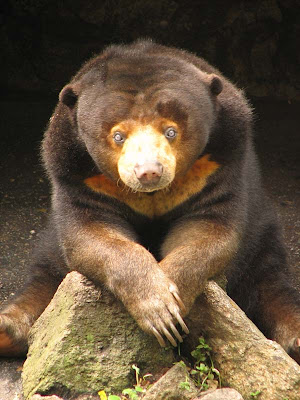
This very rare looking yellow faced sun bear is from Kun Ming Zoo, China. (Photo: Siew Te Wong)
